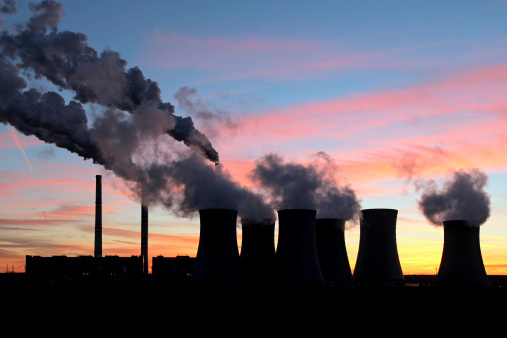
Voluntary programs may not reduce businesses’ impact on the environment.
Wouldn’t it be great if government could protect the environment without imposing burdensome regulations on business? Imagine that, simply by recognizing and rewarding businesses for adopting positive environmental management practices, government could induce firms to make substantial progress protecting the air, water, and land. It would be great if this could come true, but we think government officials need to be realistic about what such recognition programs can accomplish.
Voluntary environmental programs, like the National Environmental Performance Track, which the United States Environmental Protection Agency (EPA) adopted in the 1990s, have held great allure to policymakers and advocates. Long considered its “flagship” voluntary program, the EPA’s Performance Track program offered positive publicity and modest regulatory relief to companies that the agency considered to be environmental leaders. At least in theory, voluntary programs like this are said to have the potential to change the behavior of businesses without the need for passing legislation, promulgating regulations, and overseeing compliance – and without all the costs and conflicts associated with these traditional approaches to environmental policy.
In this sense, voluntary programs are the regulatory equivalent of Brigadoon. As a result of their captivating and persistent appeal, and even though the EPA ended Performance Track in 2009, voluntary programs remain an important part of the regulatory landscape. Policy entrepreneurs continue to advocate for them as an attractive alternative to regulatory business as usual. Not surprisingly, voluntary programs proliferate throughout government at the federal and state levels. The EPA still runs dozens of voluntary programs, about fifteen of which seek to address energy and climate change alone. And interest in voluntary programs extends well beyond the EPA. The Department of Energy runs programs very similar to Performance Track, as does the Occupational Safety and Health Administration and many states.
Yet, as we found in our recently published study of Performance Track, the reality of voluntary programs does not always match the hype. Perhaps some kinds of voluntary programs might have value within the broad portfolio of environmental policy, but our research on Performance Track suggests that the EPA and other agencies need to recognize the severe limits to this kind of voluntary program. Voluntary programs cannot, despite the claims of some of Performance Track’s proponents, provide a basis for revolutionizing environmental regulation. Advocates of such programs need to calibrate expectations and avoid making the kind of grandiose claims that the EPA continued to make about Performance Track throughout its history.
In the past, the EPA and states have repeatedly made statements about the “top performance” of those who joined voluntary programs like Performance Track. Indeed, the very name “Performance Track” implies that the program attracts members that are better performers than their peers. But Performance Track never really tracked facilities based on performance, nor could the EPA ever demonstrate that the facilities that joined Performance Track did better in terms of reducing environmental impacts than facilities that did not join. On the contrary, evidence suggests that some Performance Track facilities were not even better than the average facility in the same industrial sector. When we compared facilities that participated in Performance Track and similar facilities that did not, we did not find the joiners to be any more responsible than the non-joiners. Instead, we found that what most distinguished joiners were their distinct preferences for engaging in community outreach. The joiners were, in effect, extroverts – not necessarily performance leaders.
Government should be circumspect about the role of voluntary programs. Whatever claims agencies make about benefits from these programs should be backed up with careful research. The EPA continually said that Performance Track produced results in the form of reductions in pollution and natural resource consumption. But the EPA never collected data on trends in emissions and natural resource consumption of non-members, so the agency lacked support for statements about what change Performance Track may have caused. To its credit, the EPA did seek to study why businesses joined Performance Track – including by funding some of our research – but it could never demonstrate that Performance Track led to any environmental improvements that companies would not have made anyway for other reasons. If the EPA and other agencies are interested in exploring the potential of voluntary approaches to supplement traditional regulation, they should design voluntary programs with empirical evaluation in mind so that they can demonstrate their value. Only in that way will policymakers ever be able to understand how to make voluntary programs as effective as possible.
This post is adapted and re-posted with permission from an interview with the authors that appeared on the Harvard Environmental Law Review blog earlier this summer. The Regulatory Review featured an earlier essay by Coglianese and Nash drawing on their research on the EPA’s Performance Track program.





